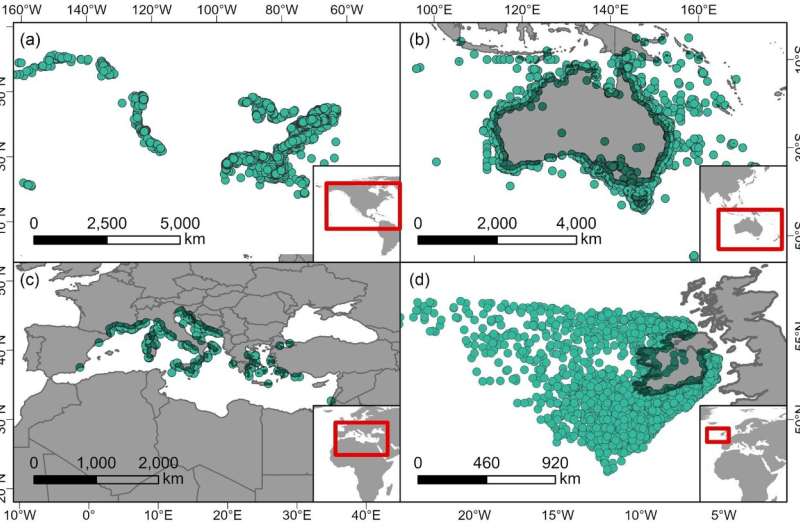This article has been reviewed according to Science X's editorial process and policies. Editors have highlighted the following attributes while ensuring the content's credibility:
fact-checked
peer-reviewed publication
trusted source
proofread
Shipwreck ecology: Sunken vessels are a scientific treasure

In a newly published article in BioScience, scientists from NOAA's National Centers for Coastal Ocean Science (NCCOS), joined by an international team of ecologists and archaeologists, describe how shipwrecks provide a unique opportunity to study complex ecological processes.
The synthesis focuses on a range of fundamental ecological functions and processes and how they manifest on and around shipwrecks.
From large sailing vessels to small dinghies or rafts, wrecked vessels provide artificial structures and materials that are starkly different from the surrounding ecosystem. Scientists have found that shipwrecks offer valuable ecological resources by becoming homes for various organisms, from tiny microbes to large marine creatures.
Microorganisms, algae, and invertebrates like corals and sponges grow on submerged debris and materials. Small fish and mobile crustaceans often find shelter in the crevices of the sunken material, and larger baitfish and predators use shipwrecks as feeding grounds, and rest stops as they swim from one place to another.
"While shipwrecks are well-recognized as cultural icons, they are also ecological treasures because they create homes for underwater life," says Avery Paxton, Research Marine Biologist at NOAA NCCOS.
"A stunning diversity of creatures like microbes, corals, and sponges settle and grow upon shipwrecks. We also often see a variety of fish, like small baitfish, all the way up to large sharks congregating on shipwrecks. These sites are truly alive with life, and so we often call them 'living shipwrecks.'"
There are an estimated three million shipwrecks scattered across the ocean floor, rivers, and lake beds, many of which have been reclaimed by aquatic life. These elusive relics are classified as "Underwater Cultural Heritage" by UNESCO, and they represent tangible remains of past human behavior and cultural heritage.
While shipwrecks are well-recognized as cultural icons, they are also ecological treasures because they create homes for underwater life. Across the globe, shipwrecks provide ideal "experimental" habitats that can be studied to address long-standing and intriguing ecological questions. Shipwreck ecology fuses both archaeology and ecology and can help expand upon our collective understanding of the ecological functions of other submerged human-built structures, such as artificial reefs.
However, the authors caution that despite shipwrecks' notable value as "biodiversity hotspots," careful observation is required because they can also harbor invasive species, cause damage to existing habitats in the surrounding area, or carry harmful cargo, such as oil.
The future of shipwreck ecology may lie in establishing a global monitoring network of shipwrecks ripe for scientific exploration, especially using advanced technologies, to help ensure that shipwrecks remain valued and healthy ecological and cultural resources.
This research was completed by scientists from NOAA NCCOS, Ulster University, Bureau of Ocean Energy Management, University of Edinburgh, Cranfield University, Woods Hole Oceanographic Institute, and University of Southern Mississippi.
More information: Avery Paxton et al, Shipwreck ecology: understanding the function and processes from microbes to megafauna, BioScience (2023). DOI: 10.1093/biosci/biad084. academic.oup.com/bioscience/ad … osci/biad084/7479881
Journal information: BioScience
Provided by American Institute of Biological Sciences


















